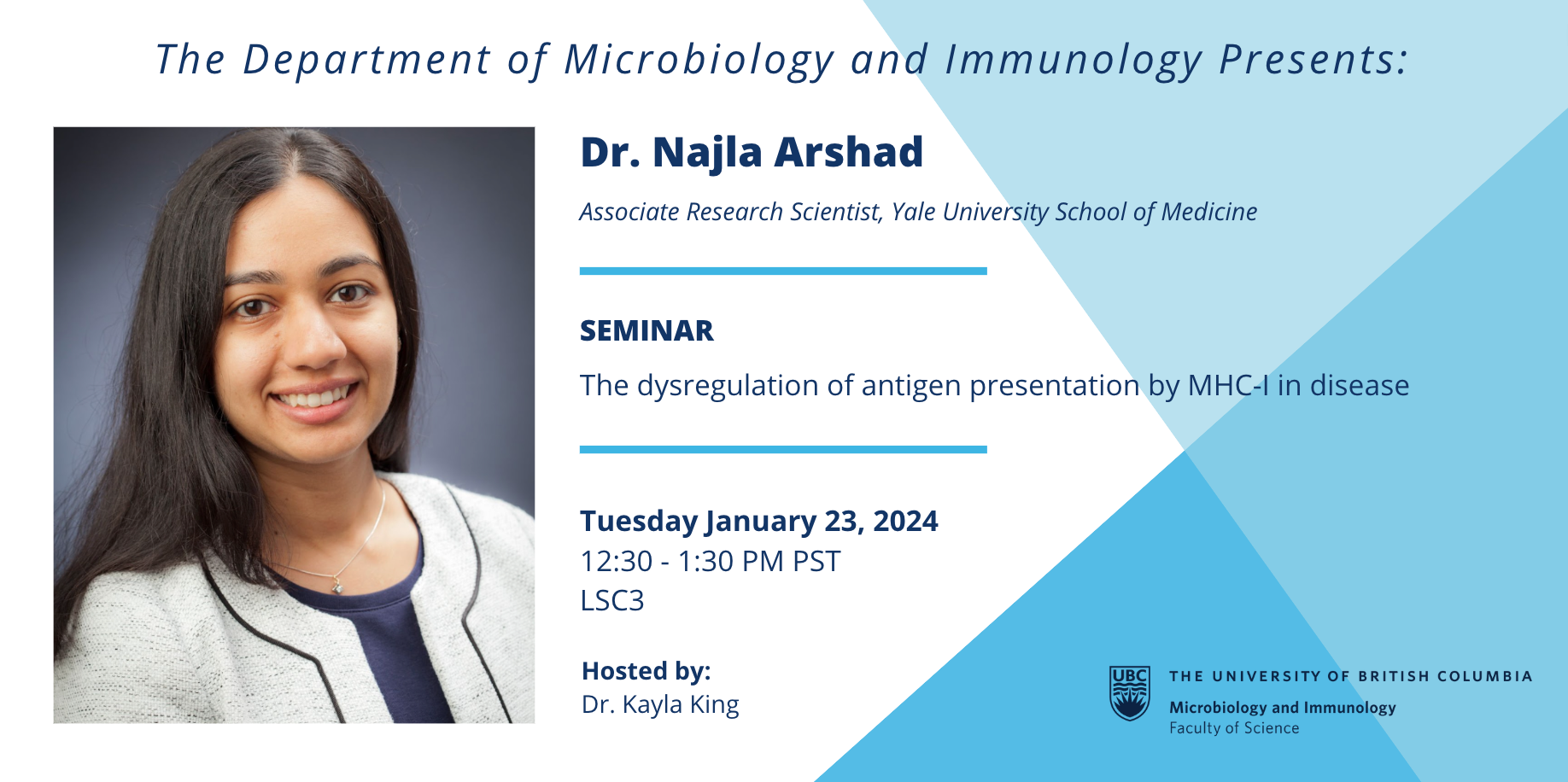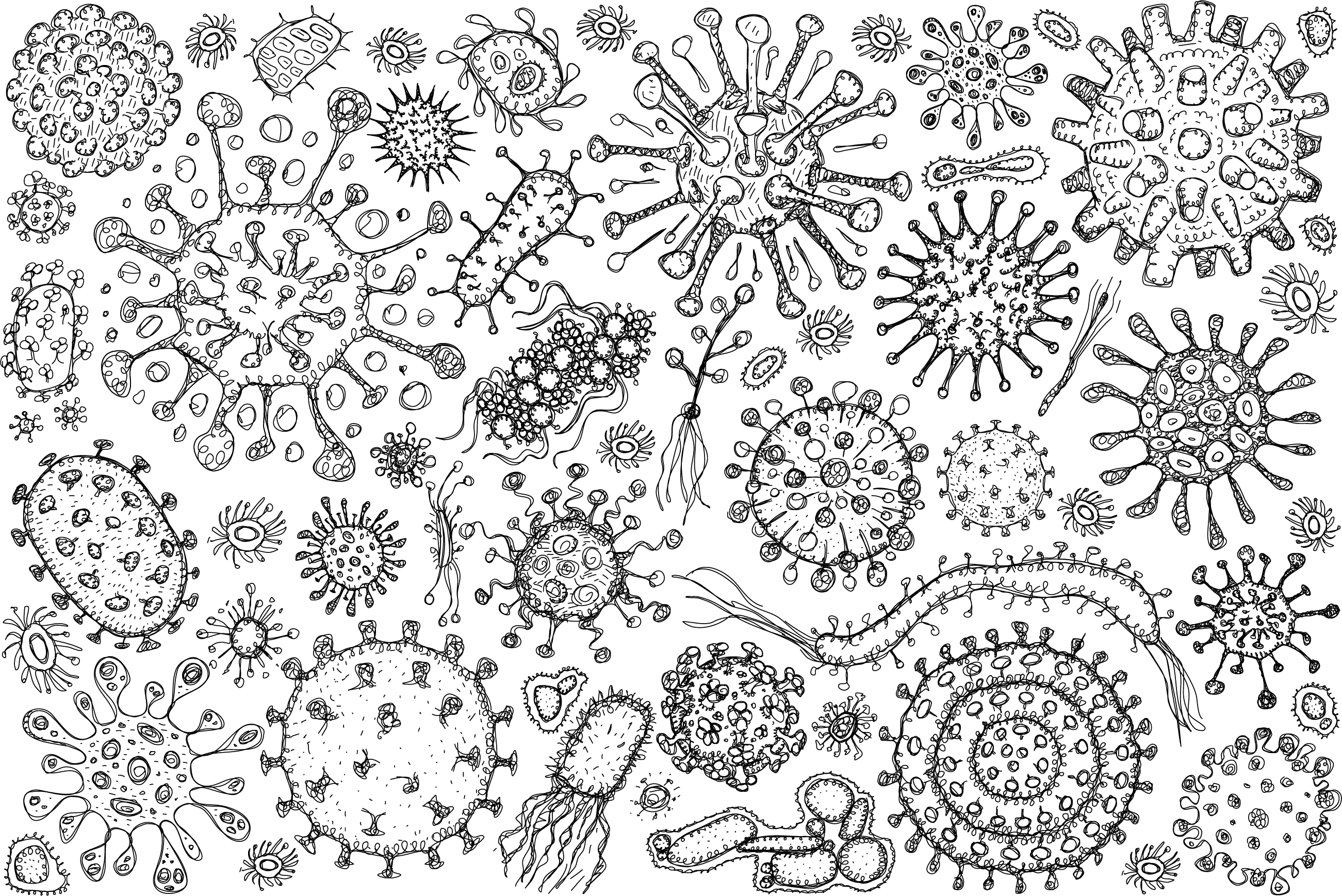
Seminar Title: The dysregulation of antigen presentation by MHC-I in disease
Seminar Abstract: Diseased cells are experts at manipulating our body’s immune responses to facilitate their survival. The major histocompatibility class I (MHC-I) proteins facilitate the recognition of healthy vs diseased cells and are heterodimers comprising a polymorphic heavy chain and a light chain named beta2 microglobulin (b2m). MHC-I is found on the surface of all nucleated cells and displays peptides derived from cellular proteins. When a cell displays mutant or pathogen-derived peptides, they are detected by the immune system and killed by cytotoxic CD8+ T cells.
I am currently investigating the dysregulation of antigen presentation by MHC-I by cancers and viruses. I showed that SARS-CoV2-derived proteins downregulated MHC-I expression using distinct mechanisms. While ORF3a disrupted global protein trafficking in the secretory pathway, ORF7a acted as a molecular mimic of b2m and specifically downregulated MHC-I by interacting with the heavy chain. In the context of cancers, I study myeloproliferative neoplasms (MPNs), a type of chronic, incurable blood neoplasms, specifically MPNs driven by frame-shift mutations in the chaperone protein calreticulin (CALR). CALR is primarily involved in glycoprotein folding in the endoplasmic reticulum (ER) but is also an essential part of a protein complex that loads peptides onto MHC-I. I showed that MPN-associated mutant CALR interfered with antigen presentation by MHC-I and led to the presentation of tumor-associated peptides, a subset of which are immunogenic. I am following up on this translationally relevant finding to develop nanobody- and cell-based therapies to treat this subset of MPNs that have no targeted treatment.
LSC 3 (Life Sciences Institute - 2350 Health Sciences Mall) MBIM itsupport@microbiology.ubc.ca America/Vancouver publicSeminar Title: The dysregulation of antigen presentation by MHC-I in disease
Seminar Abstract: Diseased cells are experts at manipulating our body’s immune responses to facilitate their survival. The major histocompatibility class I (MHC-I) proteins facilitate the recognition of healthy vs diseased cells and are heterodimers comprising a polymorphic heavy chain and a light chain named beta2 microglobulin (b2m). MHC-I is found on the surface of all nucleated cells and displays peptides derived from cellular proteins. When a cell displays mutant or pathogen-derived peptides, they are detected by the immune system and killed by cytotoxic CD8+ T cells.
I am currently investigating the dysregulation of antigen presentation by MHC-I by cancers and viruses. I showed that SARS-CoV2-derived proteins downregulated MHC-I expression using distinct mechanisms. While ORF3a disrupted global protein trafficking in the secretory pathway, ORF7a acted as a molecular mimic of b2m and specifically downregulated MHC-I by interacting with the heavy chain. In the context of cancers, I study myeloproliferative neoplasms (MPNs), a type of chronic, incurable blood neoplasms, specifically MPNs driven by frame-shift mutations in the chaperone protein calreticulin (CALR). CALR is primarily involved in glycoprotein folding in the endoplasmic reticulum (ER) but is also an essential part of a protein complex that loads peptides onto MHC-I. I showed that MPN-associated mutant CALR interfered with antigen presentation by MHC-I and led to the presentation of tumor-associated peptides, a subset of which are immunogenic. I am following up on this translationally relevant finding to develop nanobody- and cell-based therapies to treat this subset of MPNs that have no targeted treatment.

